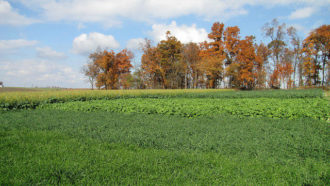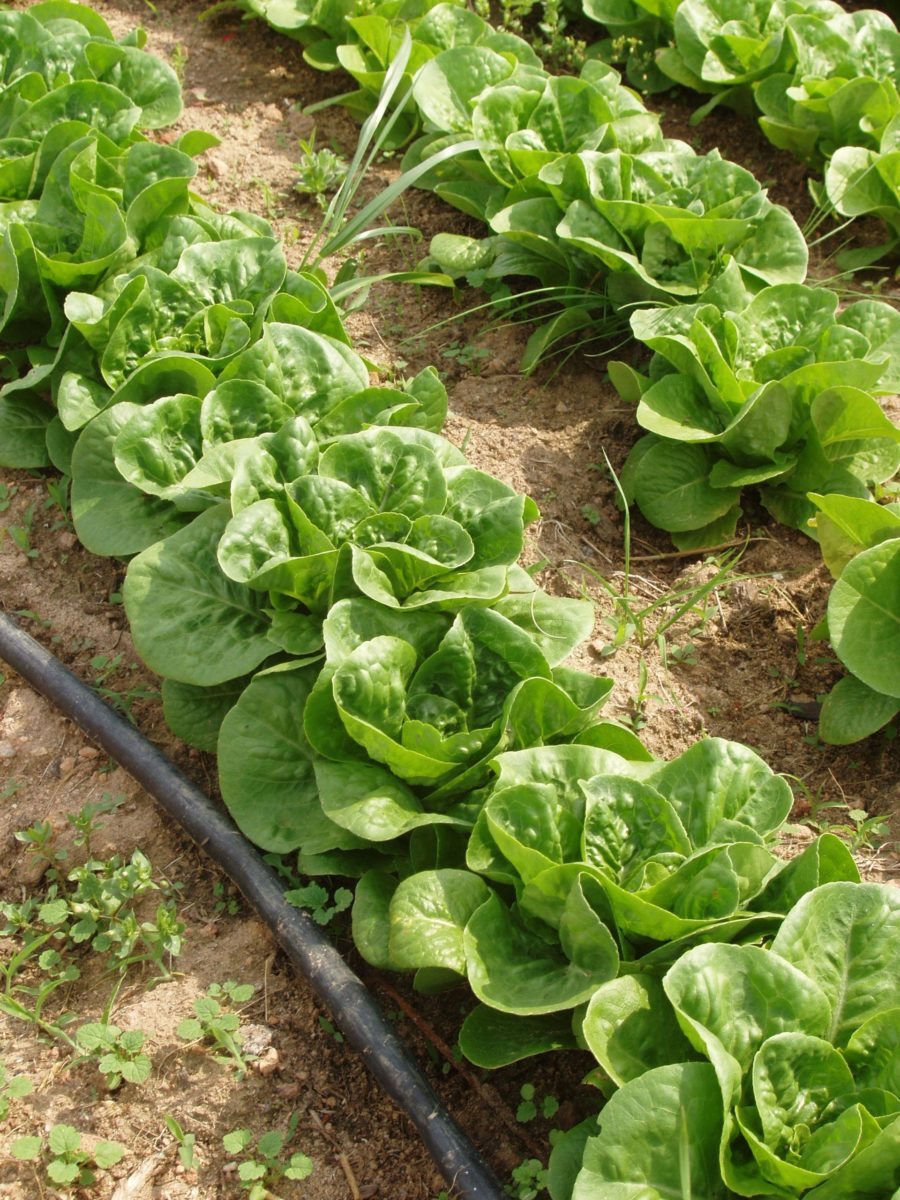
In 1992, there were 3,587 organic operations in the United States. Almost 25 years later, that number has more than quintupled to 24,650 certified organic operations as of 2016.
What accounts for this explosive growth in organic products, which now comprise almost five percent of the U.S. food market?
For one, consumers have responded to the environmental and health-related advantages of organically produced food. Between 2005 and 2015, sales of organic products skyrocketed from $13.8 billion to $43.3 billion, helping fuel the rapid growth of the industry.
Organic foods and products are also more readily available than ever before. A 2015 study by the Organic Trade Association showed that 78 percent of consumers who buy organic were able to purchase organic goods at supermarkets and approximately half of consumers who purchase organic were able to buy some of their organic goods at “big box” stores.
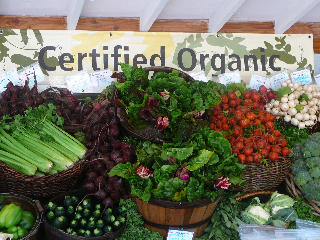
All of this consumer interest has been good for farmers and ranchers. Due to price premiums, farmers have the potential to achieve equal or greater profits than with their non-organic products. Responding to this need, certified organic acreage has more than quadrupled over the last 25 years, growing from 935,000 certified acres in 1992 to 4 million today.
However, organic farming and ranching can be challenging and complex. USDA certification regulations dictate specific growing practices, and farmers must choose from a list of approved materials for fertility and pest management. Managing a whole system can be more complex than managing a few crops and requires a more holistic approach. With organic farming, management strategies are rarely prescriptive. Instead, they are system based, meaning growers must have a broader and deeper understanding of their entire system.
In order to address the challenges for both new and experienced organic growers, SARE has now organized research results on organic production practices and approaches from over 30 years of SARE grants to researchers, farmers and Extension educators in this Organic Topic Room.
Collated into one convenient, easy-to-navigate location, SARE’s Organic Production topic room presents ample resources on organic production by topic. Scroll down for more information on what’s in the topic room, or go directly to the table of contents to find the information you need to manage pests, choose seeds and stock, develop a whole-farm system approach, market your products, implement conservation practices on your organic farm, transition to organic, become certified, and much more.
Pest Management
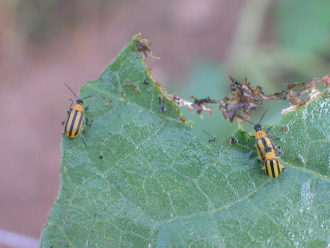
Organic pest management tends to require more intensive management than non-organic management because you must understand the life cycle of your pests as well as the biological factors that influence pest growth and control. This pest management section, which covers insects, weeds and diseases, offers information on a suite of management practices including integrated pest management, biological control, ecological strategies, physical control and shade cloths, weed control, weed prevention, organic insect control and plant disease control.
Whole Systems
To be successful, organic operations must be managed as an integrated, whole system. This whole systems page provides information on whole farm planning, horticultural systems and grain systems. Topics covered include conservation, cover crops, organic farm examples, nutrient management plans and research on soil, crops and farming systems.
Seeds
Everything starts with seeds. This seeds section includes organic seed production guides, handbooks, tutorials and books that can assist you with growing your own organic seeds. The resources also provide information on the challenges of, and need for, organic seed production.
Fertility Management
Ensuring healthy soil is imperative to a profitable and successful organic system. In organic farming systems, the majority of nutrients are supplied from organic matter additions such as compost, manure and cover crops. This fertility management section provides information on building healthy soils via crop rotation, cover crops, manure and compost. It also includes information on nutrient management plans and nutrient management case studies.
Tillage
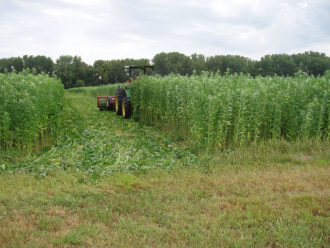
Without the ability to use many common herbicides, organic producers typically rely on tillage to manage both weeds and cover crops in annual crop production systems. However, other tools that minimize soil disturbance are becoming increasingly viable, including the use of roller/crimpers, flame weeders, mulches and deep-rooting cover crops. No-till and conservation tillage systems are important elements of organic farming systems as they help conserve soil and can be used for pest management.
This no-till section has resources on farming approaches that combine reduced tillage with other strategies such as cover crops, organic insect control and physical control, as well as resources on how to substitute no-till for black plastic.
Animal Systems
Livestock are a central component of many organic operations, both for their end products and for the role they can play in fertility management for organic cropping systems. This animal systems page provides information on organic poultry farming, organic dairy farming, and integrated crop/livestock systems, as well as broader guides on farming organic for livestock and poultry.
Marketing
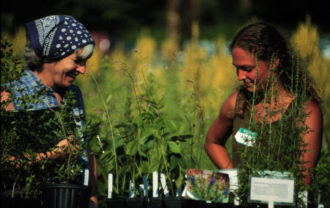
This organic marketing page has information on the business aspects of transitioning to organic, and resources for organic farming business plans, crop share agreements, renting land and building sustainable farms.
Certification
All agricultural products labeled organic must be in compliance with USDA organic regulations, and all growers with over $5,000 in production who wish to label their product organic must be certified by a USDA accredited agency. Resources in this certification section will help you with the organic certification process, one of the most important steps in transitioning your farm to organic. Visit the USDA's Agricultural Marketing Service (AMS) National Organic Program (NOP) website for complete regulatory information.
Conservation
Organic farming and conservation have many overlaps. This conservation section provides materials to help you understand and take advantage of conservation planning resources, practices and programs that support soil conservation, water conservation and conservation tillage methods. This section also has information on the USDA NRCS Conservation Stewardship Program.
USDA organic regulations, organic production principles and NRCS conservation planning objectives align closely and include many opportunities to simultaneously meet both conservation objectives and organic regulations. Although organic standards regarding natural resources do not set quantitative criteria, they require the producer to maintain (not degrade) natural resources, and in fact encourage the producer to improve the resource condition. The NRCS conservation planning process applies to all types of agricultural operations, including organic farms. There are, however, a few considerations unique to organic systems that may impact the planning process. This section focuses only on the issues and opportunities related to organic systems, not the general conservation planning process. To achieve these objectives, organic producers commonly implement a number of conservation practices that align well with NRCS conservation activities. For example, the 2008 USDA Organic Production Survey identified frequently used conservation practices such as using green manures and animal manures as nutrient sources (65 percent of respondents), buffer strips (58 percent), water management practices (51 percent), notill or minimum-till (38 percent), beneficial insect habitat (32 percent), and rotational grazing (21 percent).
Transitioning to Organic
This transitioning to organic page has many resources on how to convert from a conventional farm to an organic farm. In this section, find information on nutrient management plans, training for beginning farmers, handbooks, guides, manuals and workbooks on how to transition.
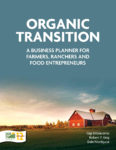
Free Resource on the Organic Transition
SARE's book, Organic Transition: A Business Planner for Farmers, Ranchers and Food Entrepreneurs will help you develop an actionable business transition plan that is suitable for yourself, your management team or a lender. Free to download; available in print.
What is Organic?
Organic production is defined by the USDA as a set of practices that comply with the USDA’s Agricultural Marketing Service (AMS) National Organic Program (NOP) regulations and in larger practice, encompasses a whole system approach to farming that integrates biological, cultural and mechanical practices to foster nutrient cycling, ecological balance and conserve biodiversity, and, provide a wealth of benefits to the environment by:
- using cover crops, manure and conservation tillage to build soil health and reduce erosion
- promoting biodiversity by mixed species plantings and rotations
- using biological control to minimize exposure to synthetic pesticides and fertilizers
- promoting the well-being of livestock by minimizing hormones and antibiotics and using alternative health care, and
- focusing on renewable resources, soil and water conservation and other management practices that enhance ecological balance.
